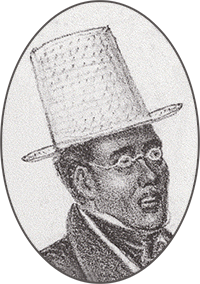 David Ruggles’ story bridges the divide between these two camps of abolition and helps explain why they coexisted in proto-Florence. Ruggles, the secretary of the New York Vigilance Committee from 1835 to 1839, is best known as the daring UGRR assistant who helped over 600 fugitives to freedom, including Frederick Douglass. In New York, Ruggles worked for Leavitt as a writer for his Emancipator. This experience helped him to launch the newspaper, the Mirror of Liberty, in 1838 and a career as one of the nation’s first black journalists. Ruggles also contributed to Garrison’s Liberator. In 1841, Lydia Maria Child left the foundering sugar beet farm on Florence Road she had been working with her husband, David Lee Child. She took over as editor of theNational Anti-Slavery Standard in New York City. Child boarded with UGRR and prison reform agent Isaac Hopper. Child likely discussed Ruggles’ failing health with Hopper. She arranged for Ruggles to move to the NAEI which was formed in the spring of 1842 near the sugar beet farm where David continued to work to provide an alternative to slave-grown sugar cane.
David Ruggles’ story bridges the divide between these two camps of abolition and helps explain why they coexisted in proto-Florence. Ruggles, the secretary of the New York Vigilance Committee from 1835 to 1839, is best known as the daring UGRR assistant who helped over 600 fugitives to freedom, including Frederick Douglass. In New York, Ruggles worked for Leavitt as a writer for his Emancipator. This experience helped him to launch the newspaper, the Mirror of Liberty, in 1838 and a career as one of the nation’s first black journalists. Ruggles also contributed to Garrison’s Liberator. In 1841, Lydia Maria Child left the foundering sugar beet farm on Florence Road she had been working with her husband, David Lee Child. She took over as editor of theNational Anti-Slavery Standard in New York City. Child boarded with UGRR and prison reform agent Isaac Hopper. Child likely discussed Ruggles’ failing health with Hopper. She arranged for Ruggles to move to the NAEI which was formed in the spring of 1842 near the sugar beet farm where David continued to work to provide an alternative to slave-grown sugar cane.
Ruggles joined the NAEI in November of 1842 and gradually nursed himself back to health using the “water cure” techniques of Vincent Priessnitz. Ruggles likely continued to help fugitive slaves as a member of the NAEI. In May of 1843, NAEI member Sophia Foord wrote her friend Robert Adams, “This is becoming or has already become quite a depot for fugitives.” In 1844, Basil Dorsey, a fugitive slave Ruggles had assisted in New York around 1838, moved near the NAEI, purchased land in 1849, was teamster for the Bensonville (later Greenville) cotton mill and became a central figure in the enclave of African Americans.
Ruggles in Florenceoldsite2010-02-09T20:30:42-05:00


